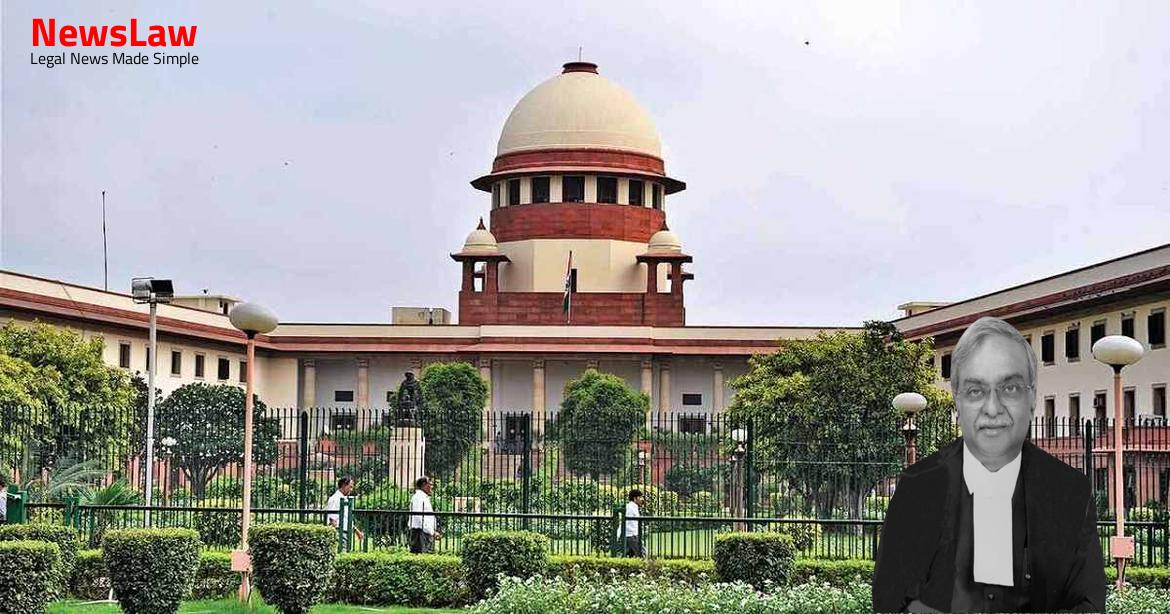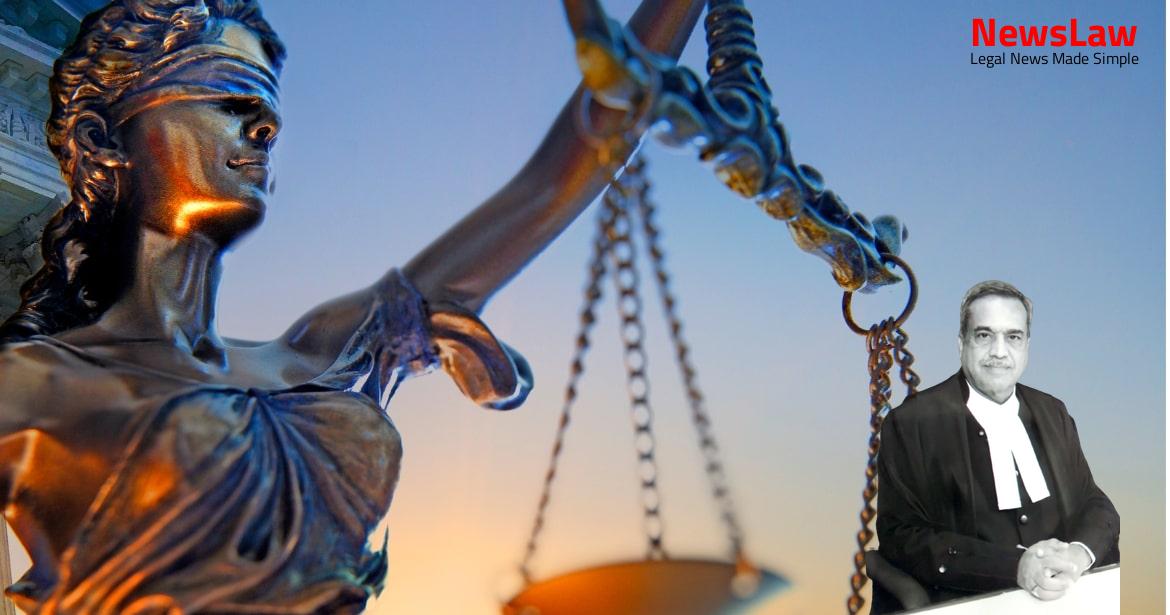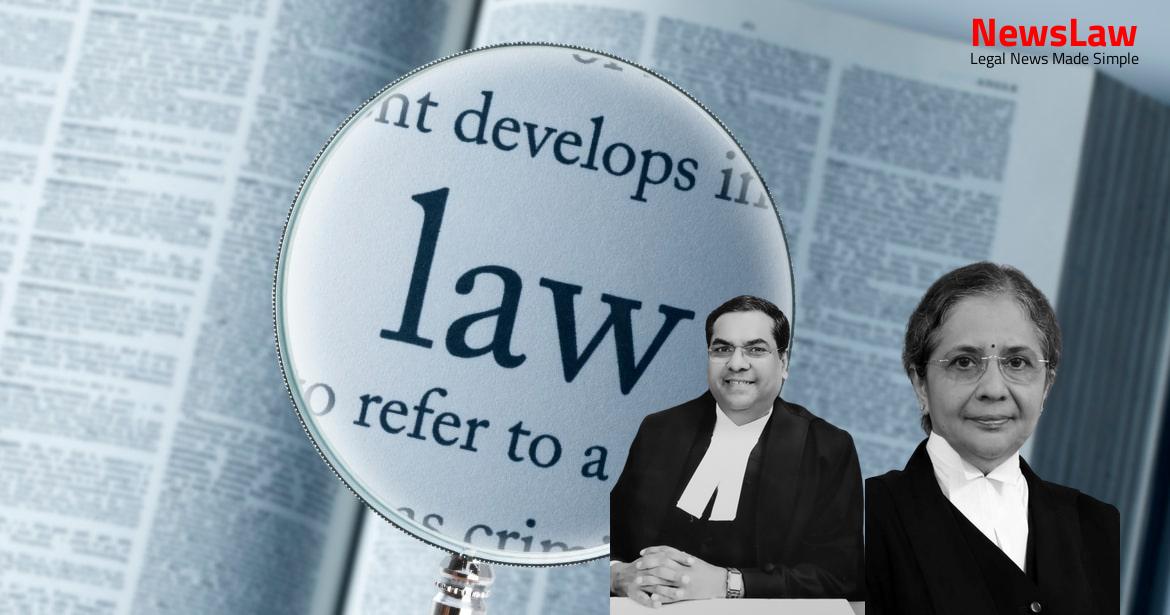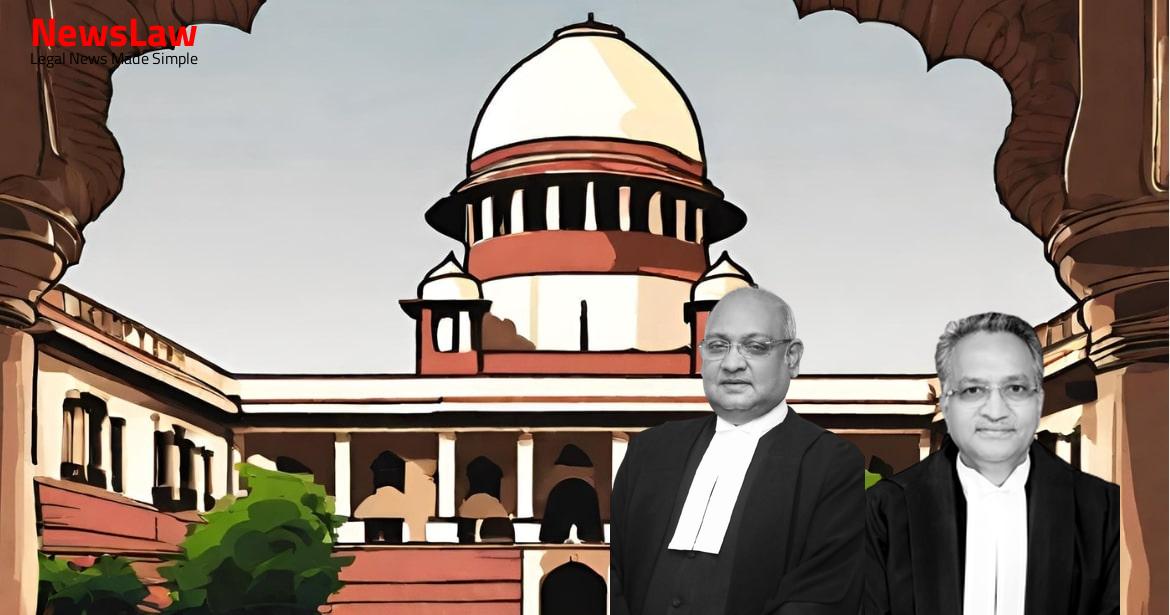On 31.05.2010, the High Court reversed the order of acquittal and held the appellants guilty of the commission of murder of deceased Marthandappa. On 28.06.1997, the fateful day, Marthandappa (the deceased), PW3 and PW4 were travelling in a bullock-cart from village Aidbhavi to the village Nagaral for cultivating their lands. A5 assaulted with a knife on the lip and back of Marthandappa, A6 assaulted with an axe on the right and left temple region and chin of Marthandappa. Thereafter, PW-3, fearing for his life, kept on hiding amidst the jali-trees and sometime during the night, he left the jali-trees and left for Devpura. The facts further reveal that on 29.06.1997 at about 12:30 P.M., PW-4 went to the Government Hospital, Shorapur, and met the doctor (PW-8).
PW-9 took the dead body of Marthandappa to the Government Hospital, Kakkera, and handed over the dead body to PW-5 (doctor) for post-mortem examination on 30.06.1997 at about 6.30 A.M. The doctor further handed over clothes and articles (MOs) found on the dead body as well as the dead body to PC (PW9). Thereafter, on 15.07.1997, A1 led police and panchas (PW6 and Yamanappa) to his house and from his house, he produced one stick (MO9) before the police and panchas and PW-10 conducted mahazar of seizure as per Ex.P5.
A3 led police and panchas to his house at Aidbhavi and from his house, he produced one axe (MO7) and PW- 10 seized the same as per mahazar (Ex.P6) and took signatures of the panchas on it. The JMFC Court, Shorapur, passed the order of committal on 19.01.1998 and the accused persons appeared before the Principal Sessions Judge, Gulbarga on 22.03.2002. The trial court, after appreciating the evidence on record, acquitted all the persons under Section 235 Cr.P.C. The trial court, after appreciating the evidence on record, acquitted the accused persons by assigning the following reasons: i.
PW-3 states that his relatives are residing in Nagaral village, which is 4 km from the scene, but he did not go and inform them. PW-3
did not inform the people at Devpura or the passengers plying in the bus in which he travelled to go to Gurugunte. Further, the evidence of PW-4 that he was unconscious till he was taken to hospital is artificial. In the wound certificate of PW-4, it is stated that the assault took place in the night. On the question of credibility, the High Court held that PW-4 is an injured witness and he has categorically stated that A1, A2, A7 and A8 assaulted the deceased with clubs on the head and on back, and A3, A4 and A6 assaulted the deceased with axe. In those circumstances, the High Court has arrived at a conclusion that there is no reason to disbelieve the evidence of PW-4, and also that he was a witness to the assault on the deceased and was also a victim of assault. The High Court has arrived a conclusion that the evidence of PW-3 and PW-4, if read together, proves the alleged incident and the evidence of PW-3 and PW-4 establishes that Al, A2, A7 and A8 assaulted the deceased with clubs, however, there are no injuries reflected on the dead body of the deceased.
Assailing the order of the High Court, the appellants submit that the High Court has erred in re-appreciating the entire evidence without finding any fault with the appreciation of evidence by the Trial Court.
whether the High Court was correct in reversing the order of acquittal of the Trial Court and thereby convicting the accused persons under Section 302 IPC. 1 to 5, residing at Aidbhavi, Taluk Lingasgur.
Also Read: https://newslaw.in/supreme-court/modifying-sentence-for-delayed-trial-a-legal-analysis/
It is so because once the Trial Court, on appreciation of the evidence on record, finds that the accused was not guilty, the presumption gets strengthened and a higher threshold is expected to rebut the same in appeal. The ‘ two-views theory ’ has been judicially recognized by the Courts and it comes into play when the appreciation of evidence results into two equally plausible views. Furthermore, it is also settled that if the view of the Trial Court, in a case of acquittal, is a plausible view, it is not open for the High Court to convict the accused by reappreciating the evidence. The view taken by the learned trial court was a reasonable view and even if by any stretch of imagination, it could be said that another view was possible, that was not a ground sound enough to set aside an order of acquittal.”” (emphasis supplied) In Sanjeev v. While dealing with an appeal against acquittal, the reasons which had weighed with the trial court in acquitting the accused must be dealt with, in case the appellate court is of the view that the acquittal rendered by the trial court deserves to be upturned (see Vijay Mohan Singh v. deposed that he was present at the place of incident when the accused persons started assaulting the deceased and PW-4 on 28.06.1997 at around 4 P.M. He also admitted that he took no steps to provide medical treatment to PW-4 who was lying unconscious at the place of incident as a result of the assault.
The very fact that PW-3 did not even contemplate about providing medical help to PW-4 or to seek protection from the local police despite such a drastic assault and instead, chose to wait for 18 hours, raises a reasonable doubt on the credibility of his version.
It is extremely doubtful that the assailants simply chose to give up on PW-3 and did not pursue him behind the bushes, despite knowing that PW-3 could turn out to be an eye witness of the incident.
The second point for corroboration of this version could be taken from the wound certificate issued by PW-8 during the treatment of PW-4 at Government Hospital, Shorapur. In the ordinary course of natural events, an injury inflicted by an axe, that too in a manner that the injured immediately fell unconscious and remained unconscious for almost 20 days, could not have been a simple injury. The said statement was a material improvement from the versions initially put forth by PW-3 and PW-4 whereby, PW-4 had sustained injuries on the back as well. Notably, all these aspects have been carefully analysed and appreciated by the Trial Court, but the High Court rejected all the doubts by observing that PW-4 was an injured witness and there was no reason to disbelieve his testimony.
Pertinently, the Trial Court had reached its decision after a thorough appreciation of evidence and we have no doubt in observing that the view taken by the Trial Court was indeed a legally permissible view. Even the aspects discussed by the Trial Court have not been fully addressed and the High Court merely relied on a limited set of facts to arrive at a finding. The foregoing discussion yields the following results : (1) an appellate court has full power to review the evidence upon which the order of acquittal is founded; (2) the principles laid down in Sheo Swarup case [LR 61 IA 398] afford a correct guide for the appellate court’s approach to a case in disposing of such an appeal; and (3) the different phraseology used in the judgments of this Court, such as, (i) “substantial and compelling reasons”, (ii) “good and sufficiently cogent reasons”, and (iii) “strong reasons”, are not intended to curtail the power of an appellate court in an appeal against acquittal to review the entire evidence and to come to its own conclusion; but in doing so it should not only consider every matter on record having a bearing on the questions of fact and the reasons given by the court below in support of its order of acquittal in its arriving at a conclusion on those facts, but should also express those reasons in its judgment, which lead it to hold that the acquittal was not justified.”
Also Read: https://newslaw.in/supreme-court/modification-of-sentence-imposed-in-criminal-case/
The principles which come into play while deciding an appeal from acquittal could be summarized as: (i) Appreciation of evidence is the core element of a criminal trial and such appreciation must be comprehensive – inclusive of all evidence, oral or documentary; (ii) Partial or selective appreciation of evidence may result in a miscarriage of justice and is in itself a ground of challenge; (iii) If the Court, after appreciation of evidence, finds that two views are possible, the one in favour of the accused shall ordinarily be followed; (iv) If the view of the Trial Court is a legally plausible view, mere possibility of a contrary view shall not justify the reversal of acquittal; (v) If the appellate Court is inclined to reverse the acquittal in appeal on a re-appreciation of evidence, it must specifically address all the reasons given by the Trial Court for acquittal and must cover all the facts; (vi) In a case of reversal from acquittal to conviction, the appellate Court must demonstrate an illegality, perversity or error of law or fact in the decision of the Trial Court. In this case, the appellants, as a separate argument, have also submitted that the case is not based on circumstantial evidence and is based on direct evidence of PW-3 and PW-4, and therefore, the principles of circumstantial evidence shall not apply. State of Maharashtra [(1973) 2 SCC 793] where the observations were made: “Certainly, it is a primary principle that the accused must be and not merely may be guilty before a court can convict and the mental distance between ‘may be’ and ‘must be’ is long and divides vague conjectures from sure conclusions.” To sustain a conviction, the Court must form the view that the accused “must have” committed the offence, and not “may have”. We find no infirmity in the order of the Trial Court and the same stands restored.
Case Title: MALLAPPA Vs. STATE OF KARNATAKA (2024 INSC 104)
Case Number: Crl.A. No.-001162-001162 / 2011



